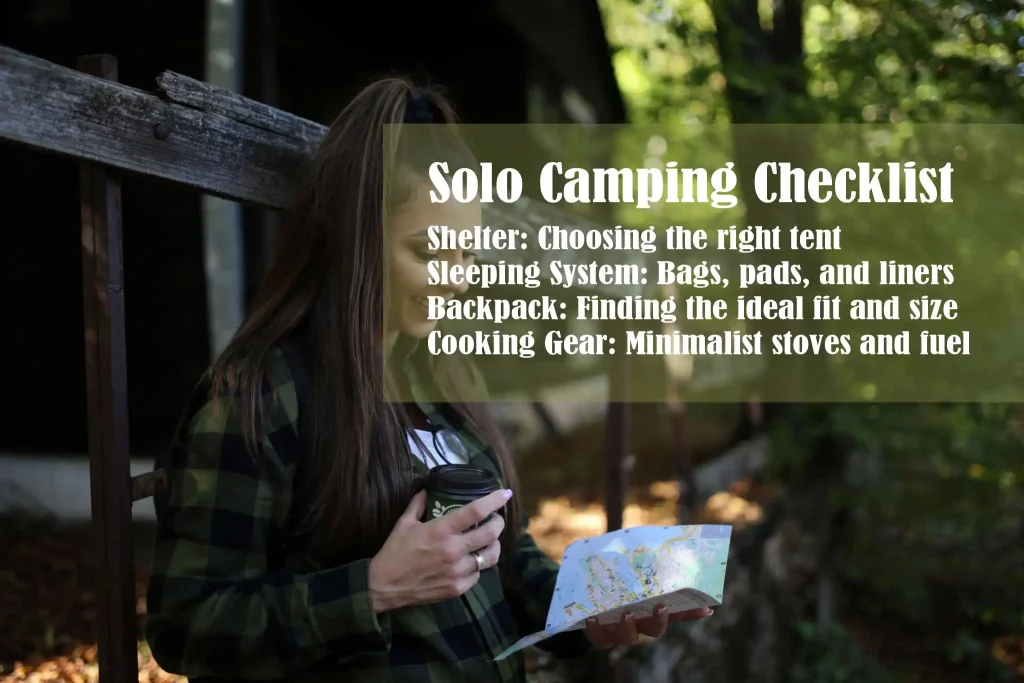Solo camping checklist essentials are more than just gear – they’re your lifeline out in the wild.
Ever thought about hitting the wilderness all by yourself?
It’s an adventure, but boy, does it need some solid prep. You’re not alone in this – I’ve been there, and I’ve got the scoop on what you’ll need.
Imagine forgetting that one thing and being miles away from civilization? Yikes!
But hey, that’s what this guide is for. Dive in, and let’s make sure your solo trek is nothing short of epic.
Understanding the Basics for Solo Camping Checklist
Before we get into the nitty-gritty, let’s clarify a few basics that are paramount when you’re heading out all by your lonesome.
Differentiating Solo from Group Camping
Ever been on a group camping trip? It’s a whirlwind of laughter, shared tasks, and communal living. But solo camping? That’s an entirely different ballgame. Imagine being the sole actor on a vast stage. You’re in charge of your plot, your narrative, your pace. It’s liberating, but it also means the entire responsibility is on you. No more relying on John to build the fire or Sarah to cook dinner. It’s just you, your skills, and the wilderness.
Safety Considerations for the Lone Traveler
When you’re solo, every decision counts double. It’s thrilling but demands extra caution. Always inform someone about your plans, your route, and when you plan to return. A quick text or call can make all the difference if things go south. And speaking of routes, always have a reliable GPS or a trusty old map. Remember, nature doesn’t have Wi-Fi, and cell service can be spotty at best.
Recognizing the Importance of Lightweight Gear
Gone are the days when you could split the weight of the tent or share the load of the cooking gear. Every ounce counts when you’re trekking alone. Investing in lightweight gear is not just a preference; it’s essential. Your back will thank you later when you’re scaling that steep hill without feeling like a mule. 🌲🔥🏕️
Solo Camping Checklist: Big Four of Camping Gear
Nervous about your first trip? A solid solo camping checklist can ease those jitters. So, we’ve brushed up on the basics, but what about the gear? Ah, gear! That collection of stuff that, when chosen correctly, can make your camping experience a dream, but if picked hastily, can transform it into a saga of frustration. Let’s zero in on the ‘Big Four’ essentials that every solo camper should have in their arsenal.
Shelter: Backpacking tent
You’re in the woods, and suddenly, the sky opens up like it’s got something to prove. Where are you gonna run? Enter the backpacking tent. It protects you from the elements and provides that cozy nook for a restful night. For solo campers, a lightweight, durable backpacking tent is a gem. Look for a tent that’s easy to set up (especially if you’re arriving at a campsite late), has solid waterproofing, and offers a decent amount of ventilation. Nobody wants a tent that gets stuffier than a crowded elevator.
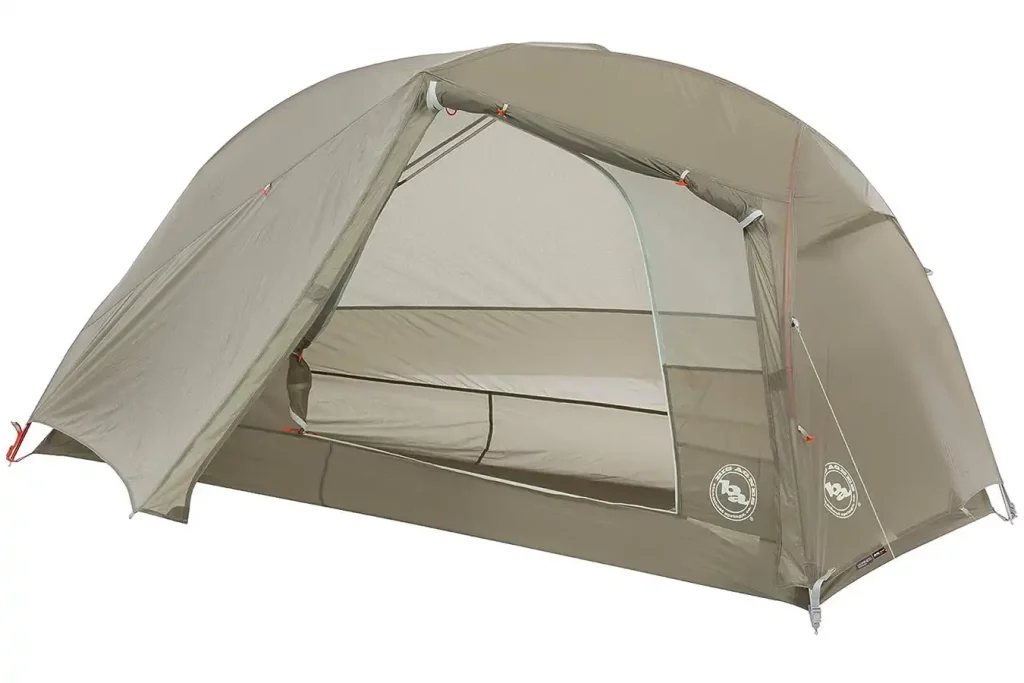
The tent. Your castle in the wild! But which one to choose? For the solo camper, look for something lightweight, easy to pitch, and durable. Consider weather conditions too. If you’re anticipating a romantic dance with raindrops, ensure it’s got a sturdy rainfly and groundsheet. Also, unless you’re fond of nighttime critter visits, a tent with good meshing is a must.
Also know: What is a Pop Up Tent and How Do they Works
Sleeping System: Bags, pads, and liners
Imagine this: after a long day of hiking, you snuggle into a cozy cocoon, the cold ground a distant memory. Sounds dreamy, right? A good sleeping bag is a game-changer! Depending on the season, opt for a bag that suits the temperature range. Throw in a lightweight, insulating pad beneath and perhaps a soft liner inside for that added warmth and comfort. Ah, sweet dreams!
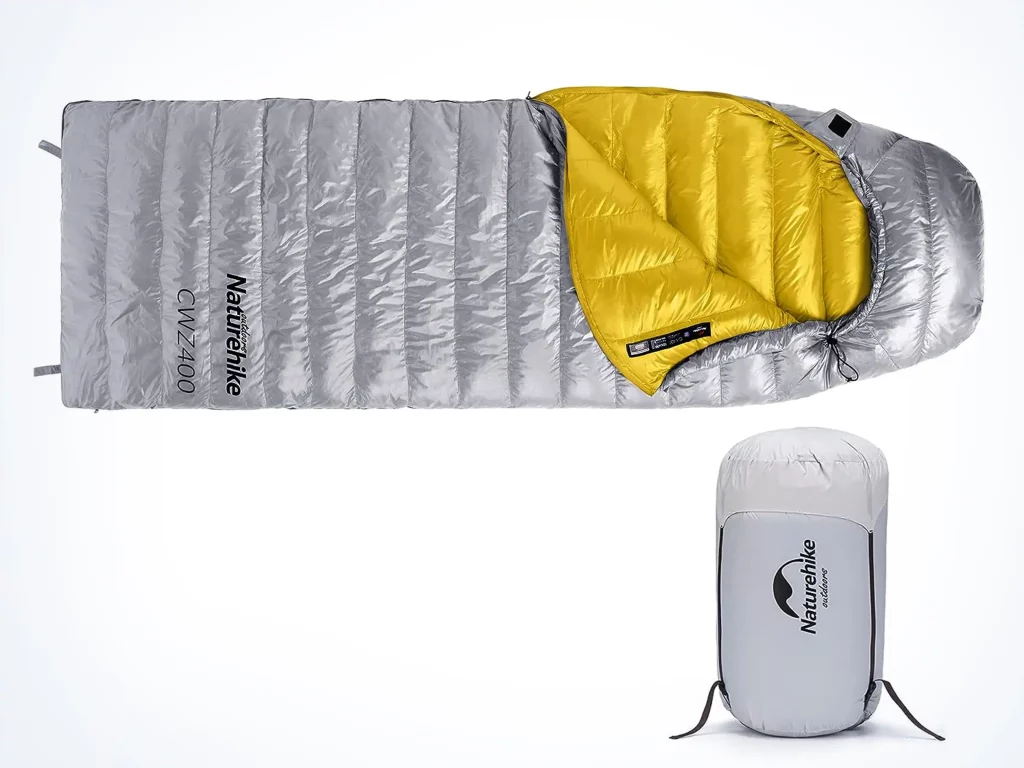
Hiking Backpack: Finding the Ideal Fit and Size
The chariot that carries your life on your back! This is your roadie, your stagehand—it hauls your gear, food, and, well, basically your home. Picking the right hiking backpack is all about finding that sweet balance between size and comfort. And remember, fit is key. A backpack that sits right makes the difference between feeling like a nimble forest creature and a lugging snail. Adjust those straps and find your fit!
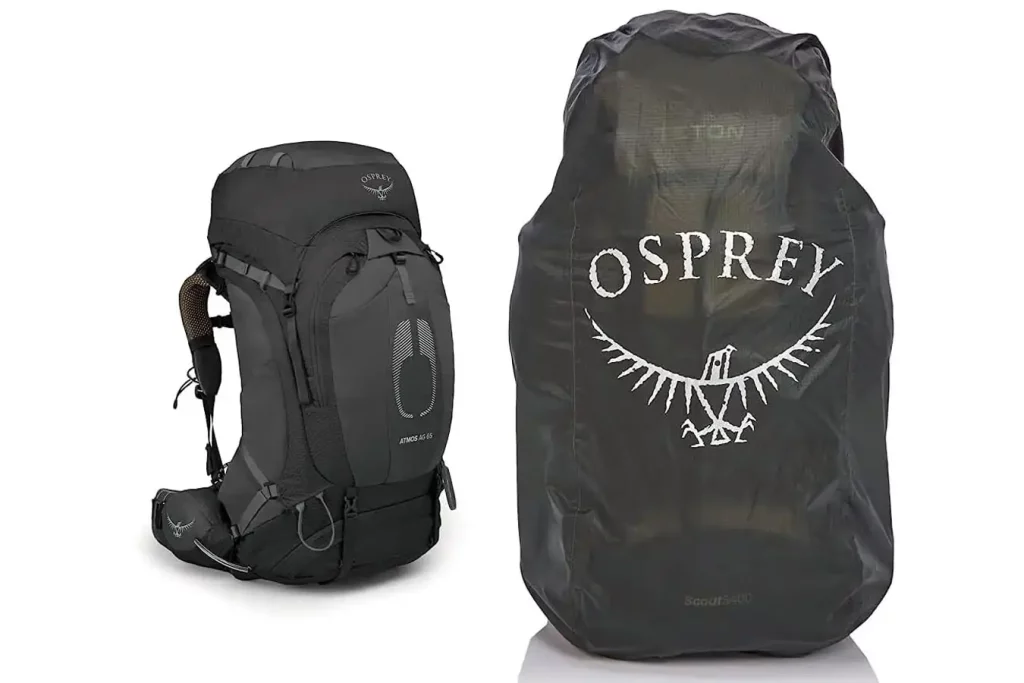
Ever seen those folks who look like they’re about to topple backward with their enormous backpacks? Don’t be that person. As a solo camper, you need a pack that fits snugly, distributes weight evenly, and has ample space without being oversized. Try various models, get it fitted, and ensure it has multiple compartments for organized storage.
Cooking Gear: Basic Campfire Utensils
Food is the highlight for many on a camping trip (guilty!). But remember, solo doesn’t mean hauling a kitchen. You’re not setting up a five-star kitchen here, but you do need some basics. A portable stove is gold as alternative to cooking over open flame; just remember to check the availability of fuel where you’re heading. A cooking pot and a spork can take you a long way. Add a compact knife and you’re the Gordon Ramsay of the wilderness.
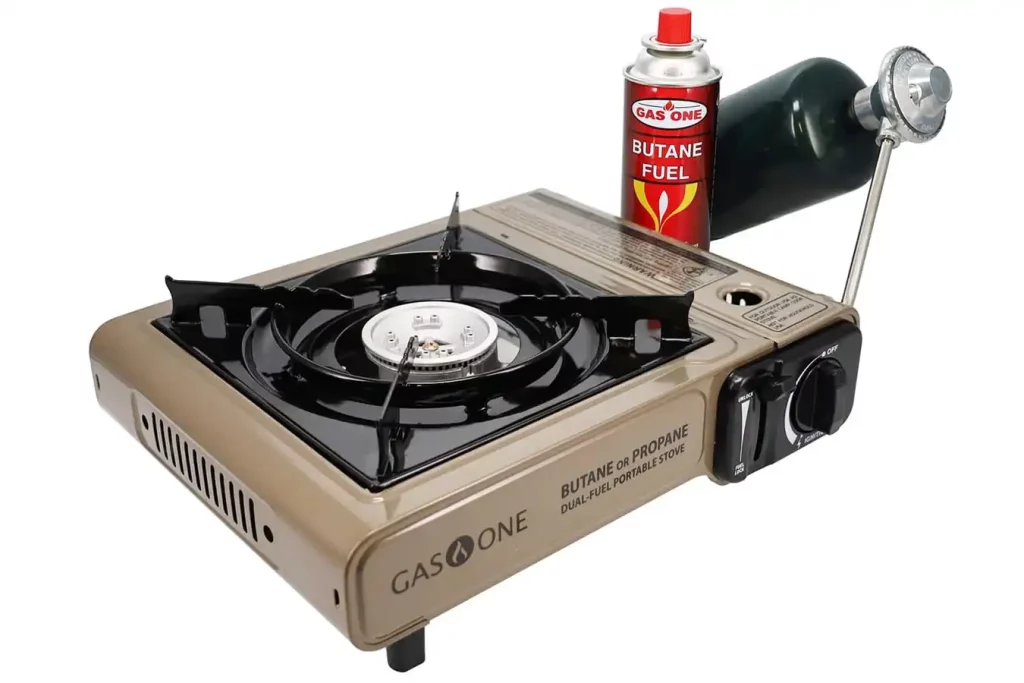
The instruments of a mouth-watering campfire meal. We’re talking about more than just roasting marshmallows here! A good pot, a sturdy pan, and reliable utensils can turn your campfire into a wilderness kitchen. Pack light, but smart. And remember, nothing tastes as good as a meal cooked under an open sky. Well, sort of. 🌲🌠🍳
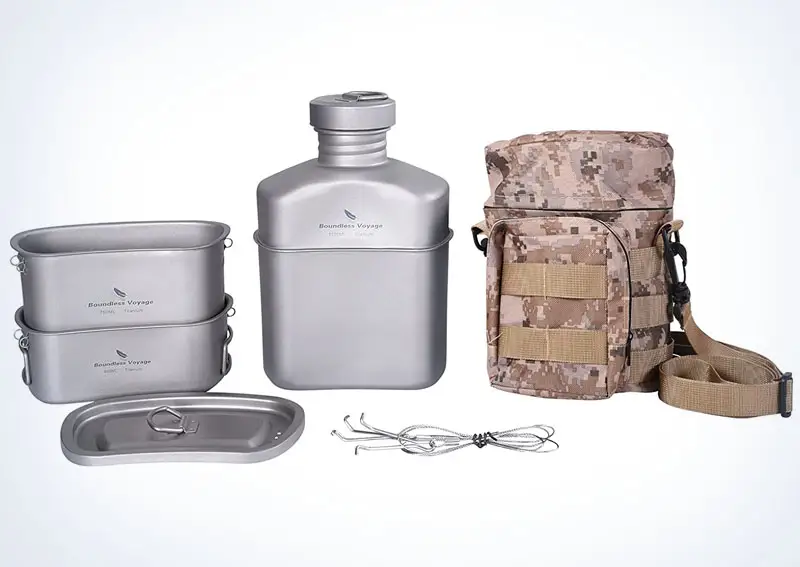
Apparel Essentials on Your Solo Camping Checklist
Heading out alone? Your solo camping checklist will be your best bud. Alright, we’ve tackled gear, but what about what’s on YOU? It’s not just about looking Instagram-ready (though that’s a bonus!). It’s about comfort, safety, and being prepared for Mother Nature’s ever-changing moods. Let’s dive into the wardrobe must-haves for solo campers.
Layering 101 on Your Solo Camping Checklist
Ever heard the saying, “There’s no such thing as bad weather, just bad clothing”? Well, it’s kind of true. The secret sauce? Layering. Start with a moisture-wicking base layer to keep sweat at bay. Throw in an insulating middle layer (think fleece or down), and top it off with a waterproof, breathable shell. The beauty of layering is you can add or shed as the day unfolds. No more freezing mornings or sweaty afternoons!
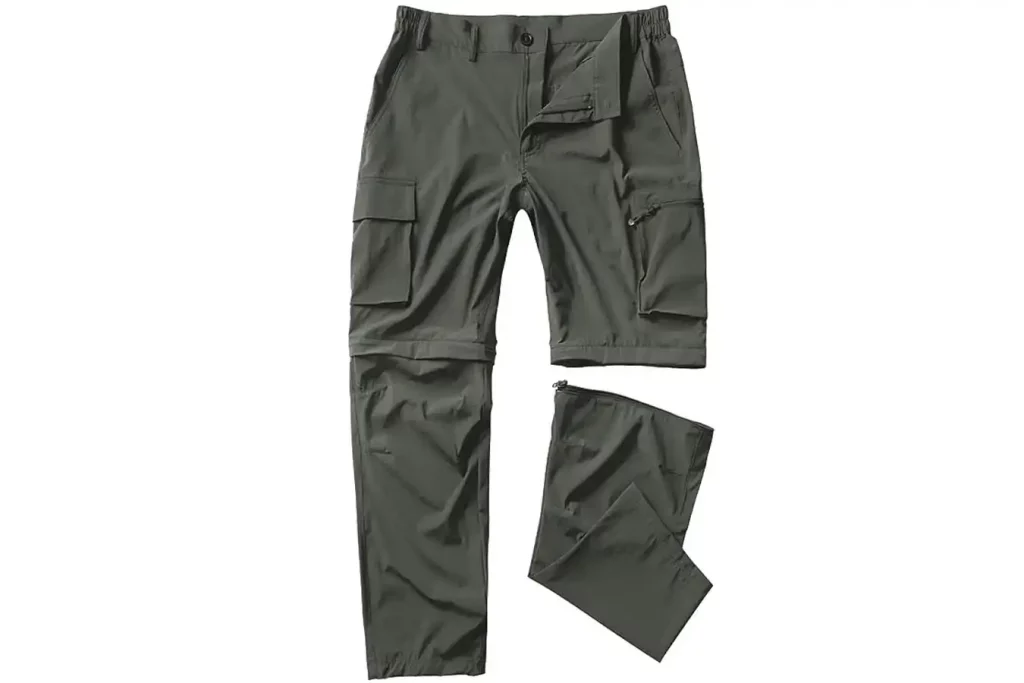
Also see: How Should Snow Pants Fit
Footwear: From hiking boots to camp shoes
Let’s talk feet, folks. They’re your ride out in the wild. Investing in a good pair of hiking boots is essential. Look for support, a snug fit, and waterproofing. And after a day of traipsing? Give those feet a break! Pack lightweight camp shoes or sandals. Your toes will thank you with a joyful wiggle.
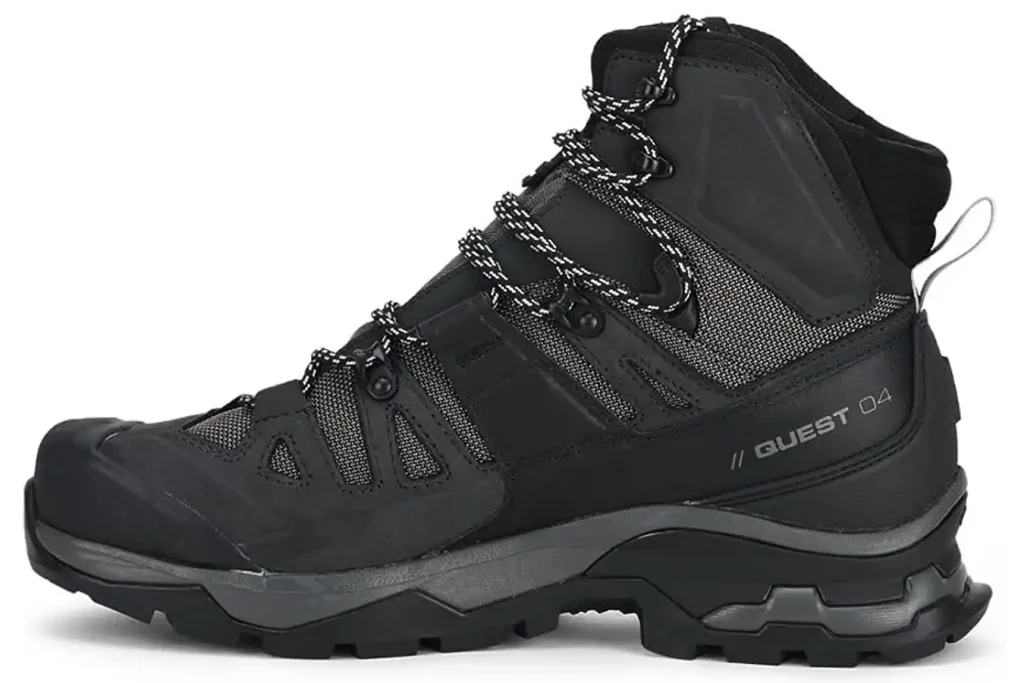
A pursuits comparison for you: Snow Boots Vs Hiking Boots
Weather-specific gear: Rain, snow, and sun protection
Depending on your adventure destination, the skies might throw a curveball (or two). For those pesky rainy days, a trusty rain jacket and pants are your best friends.
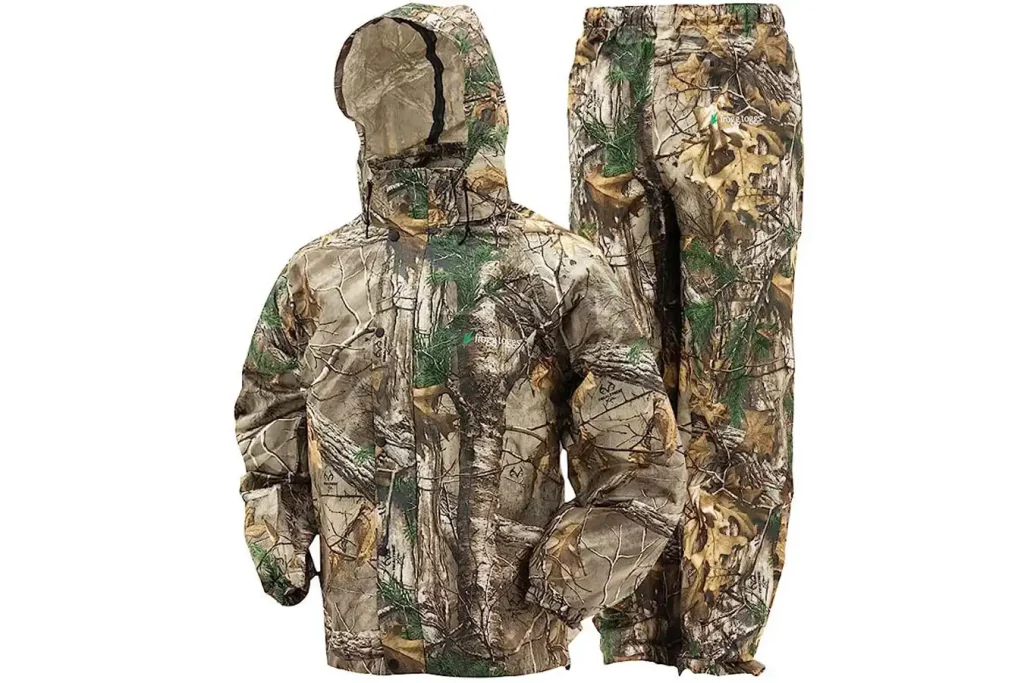
Venturing into snow territory? Insulated gloves and a beanie come to the rescue. Sunny escapades? A wide-brimmed hat, UV-protective clothing, and trusty sunglasses will keep those harmful rays at bay. ⛅🌧❄👟
Nutrition & Hydration on Your Solo Camping Checklist
Ever had that “Oops, I forgot” moment? Not with a solo camping checklist, you won’t! Alright, let’s get into the juicy stuff (pun intended). You’ve got all your fancy gear and outfits, but what about fuel for the engine – YOU? Out there, it’s not just about filling the stomach. It’s about the right nutrients and hydration to keep you revved up and ready. So, let’s break it down.
Planning your meals: Freeze-dried vs. DIY options
There’s no denying the convenience of freeze-dried meals. Tear a packet, add hot water, and voila! Dinner’s served. But for those with a culinary flair or specific dietary needs, DIY is the way to go. It could be as simple as pre-packed pasta or a gourmet campfire cookout. Decide based on weight constraints, taste preferences, and how much cooking you fancy doing under the stars.
Water purification methods: Filters, tablets, and boiling
Okay, hydration heroes, listen up! Not all water is sippable straight from the source. Sometimes, you’ve gotta give it a little TLC. Filters can be a lifesaver, literally, making murky water clear and clean. For the minimalist trekker, purification tablets are a lightweight dream. Old school? Boil your water for a solid 10 minutes. Safe sips, happy trips!
Snacking wisely: Energy-dense options for on-the-go
Now, who doesn’t love a good snack break? But out in the wild, it’s not just about taste. You want bang for your buck – energy-packed munchies. Think nuts, seeds, protein bars, and good old jerky. These are your pocket rockets, ready to launch you up that next hill or through that longer-than-expected trail. Remember, keep it dense, nutritious, and delicious! 🍲💧🥜🏕
Navigation Tools on Your Solo Camping Checklist
Let’s talk getting lost…or rather, making sure we don’t! Whether you’re following the North Star or relying on a high-tech GPS, navigation is crucial. It’s the difference between “This way looks good, doesn’t it?” and “I know exactly where we’re headed!”. So, map in hand (or app open), let’s venture forth!
Maps and compasses: Traditional orientation
There’s something nostalgic and incredibly satisfying about unfurling a map and setting a compass. Like tapping into the ways of old explorers. Sure, it requires a bit more skill (and maybe a course or two), but these trusty tools won’t run out of battery. They’re straightforward, reliable, and have been guiding adventurers for centuries. So why not keep the tradition alive?
GPS and apps: Modern-day navigation aids
For those who swear by the digital age, GPS and navigation apps are your best pals. With real-time updates, trail highlights, and the ability to mark waypoints, they’re like your pocket guide to the great outdoors. And the best part? Most of them work offline. But, always ensure you have them downloaded and set before heading out. No one wants to be squinting at a loading screen in the middle of nowhere!
Backup measures: What to do if technology fails
Alright, real talk: sometimes, tech can let you down. Batteries die. Signals get lost. But that doesn’t mean you have to. Always carry a spare set of batteries or a power bank. Familiarize yourself with the terrain beforehand. And, here’s a golden oldie – tell someone your route and expected return. It’s a simple act that can make a world of difference. 🗺🧭🛰🌲
Campsite Set-Up and Breakdown
Pitching a tent or sparking a campfire may seem like simple tasks, but when you’re out in the wilderness, there’s a blend of art and science to it. It’s not just about creating a cozy home-away-from-home for a night or two, but also about respecting Mother Nature. So, let’s delve into how to set up a stellar campsite and ensure we leave the place as pristine as we found it.
Choosing a site: The Leave No Trace principle
You’ve probably heard the phrase, “Take only pictures, leave only footprints.” This embodies the Leave No Trace principle. When selecting your campsite, look for established sites to minimize your impact. Steer clear from lakeshores, streams, and meadows to protect fragile ecosystems. Remember, the aim is to blend in so seamlessly that, once you pack up, it’s as if you were never there.
Campfire safety and cooking guidelines
Ah, the campfire. The heart of every camping trip, and the storyteller’s stage. But with great power comes great responsibility. Always check local fire regulations; sometimes conditions are too dry, and campfires aren’t allowed. If you get the green light, ensure you’re building your fire in a safe pit, away from flammable material. And when it comes to cooking? Keep it simple. Pre-prepared meals or one-pot wonders are perfect. After all, gourmet doesn’t always mean complicated!
Packing out and ensuring you leave no trace
It’s been grand, but like all good things, the camping trip must come to an end. As you break down your camp, pack out everything you brought in. Yes, even that tiny candy wrapper. Double-check for forgotten tent pegs and cooking utensils. As for that campfire? Make sure it’s out. Like, really out. Douse it, stir, and douse again. The goal? Walk away with memories, photos, and the satisfaction of leaving nature undisturbed. 🌲🔥🏕
Personal Health and Safety: Must on Your Solo Camping Checklist
Camping solo is a journey of self-discovery. But while embracing the wild side of life, it’s essential to prioritize personal health and safety. Mother Nature, though beautiful, can be unpredictable. Let’s equip ourselves with the knowledge and tools needed to tackle any curveball the great outdoors might throw our way.
First Aid Box
Nobody plans to get a cut or sprain an ankle on a hike, but let’s be honest, things happen. That’s why a first-aid kit is a non-negotiable. Stock it with bandages, antiseptic wipes, blister treatments, and pain relievers. It might be worth taking a basic wilderness medicine course. Knowing how to treat minor injuries or recognize symptoms of altitude sickness can make a world of difference. And hey, fun fact, did you know that duct tape can be a lifesaver for blisters? No joke!
First things first—safety. Always bring a comprehensive first aid kit.
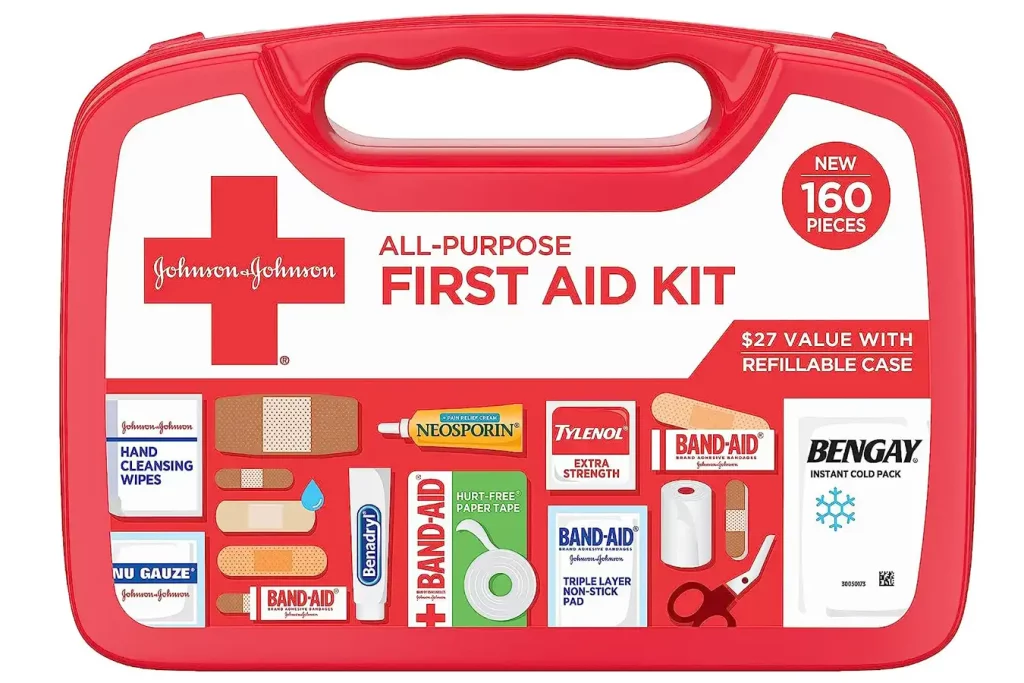
Personal hygiene in the wild
We’ve all had that moment when, a few days into a camping trip, we catch a whiff and think, “Is that…me?” Maintaining hygiene isn’t just about smelling like roses. It’s essential for health! Biodegradable soap is your new best friend. Use it for hands, body, and even dishes. For those ‘nature calls’ moments, have a trowel handy to dig a small hole and do your business at least 200 feet away from water sources. Oh, and pro-tip: wet wipes can feel like a spa day after a long hike.
Wildlife encounters: How to prevent and handle
It’s thrilling to spot wildlife from a distance, but a close encounter? That’s a different ball game. Each region has its own cast of critters, so research the animals you might bump into. Bear canisters are a must in bear country. Making noise while hiking can alert animals of your presence. If you do cross paths with wildlife, keep calm and give them plenty of space. Remember, it’s their home, and we’re just visitors. 🌿🚑🐻
Essential guide for solo campers: How to Keep Animals Away From Campsite
Communication and Safety Devices
Alright, let’s chat about something that might not make the top of everyone’s solo camping wishlist, but is totally indispensable: staying connected! No, I’m not talking about Instagram updates or those work emails. I mean ensuring you can holler for help or just give a “I’m A-OK” signal to loved ones. Trust me, it’s kinda a big deal.
Signal mirrors and whistles
Picture this: you’re hiking through thick woods, you lose your trail, and your phone’s dead. Sounds like the start of a horror story, right? Here’s where old-school tools come into play. A signal mirror can catch sunlight and flash a bright beam visible from miles away. Handy, right? And a whistle? That tiny device can pierce through the forest noise far better than shouting. Three short blows on a whistle is universally known as a distress call. And, of course, it’s a must-have for scaring away that pesky raccoon trying to snag your snacks.
Satellite phones and personal locator beacons
Okay, let’s step it up a notch. Sometimes, you’re so off the grid that traditional phones are just fancy cameras. Enter satellite phones and personal locator beacons (PLBs). These gadgets communicate directly with satellites, meaning you can reach out from pretty much anywhere. Need to check in with family? Sat phone’s got your back. Got a real emergency? Activate your PLB, and a search and rescue team will get your SOS.
Emergency planning and check-ins
So, you’ve got all the gear, but there’s one more piece to this puzzle: letting folks know your plan. Always tell someone where you’re heading and when you plan to return. Regular check-ins can ease your family’s mind and also be a lifeline in case things go south. Set a time – say, every evening at 7 pm – to send a quick “all’s good” message. If you miss a check-in, they’ll know it’s time to sound the alarm. 📞🛰🌲
Essential Gear on Your Solo Camping Checklist
We’ve covered the Big Four, but there are other must-haves to add to your list. Think of these as your camping sidekicks—the gear that may not steal the limelight but sure as heck make your life easier out there. Let’s dive in!
Firestarters
Ah, the campfire – a camper’s TV and heater all rolled into one. But striking up a conversation with your firewood is a bit tricky without a reliable firestarter. Whether you’re a fan of waterproof matches, lighters, or those nifty magnesium fire starter sticks, ensure you’ve got backups. And remember, practicing starting a fire before heading out is a game-changer!
Extra hiking clothes, T-shirts
Who knew nature could be so… unpredictable? One minute it’s all sunshine and birdsong; the next, you’re drenched in a surprise downpour. Packing a few extra sets of hiking clothes and T-shirts means you’re always prepared. Quick-drying materials are your best friend here – and hey, no one’s judging if you wear that favorite tee two days in a row!
Multipurpose tools and knives
You ever have one of those “I wish I had a thingamajig for this” moments? Meet your new best friend: the multipurpose tool. Think of it as the Swiss Army’s gift to campers everywhere. From cutting rope, to popping open a can of beans, to those surprise repairs – you’d be surprised how often it comes in handy. And a good, solid knife? Non-negotiable. Whether you’re prepping a campfire meal or warding off those sticky tree sap situations, you’ll thank yourself for packing one.
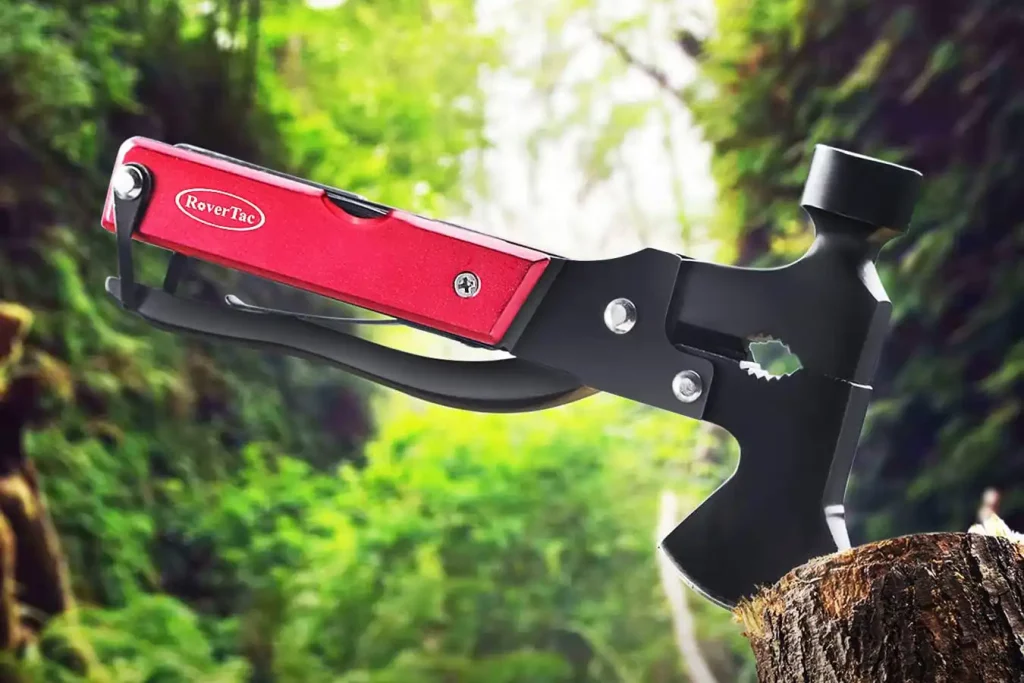
Lighting: Headlamps, torches, and lanterns
Let’s be real. Stumbling around in the dark trying to locate that rogue sock? Not fun. Enter the world of camp lighting. Headlamps are like giving yourself night vision – perfect for those middle-of-the-night bathroom trips. Torches, on the other hand, are ideal for that focused beam when you’re investigating a weird noise (it’s probably just a squirrel, by the way). And lanterns? They transform your campsite into a cozy haven, making it feel like outdoor-living-room vibes.
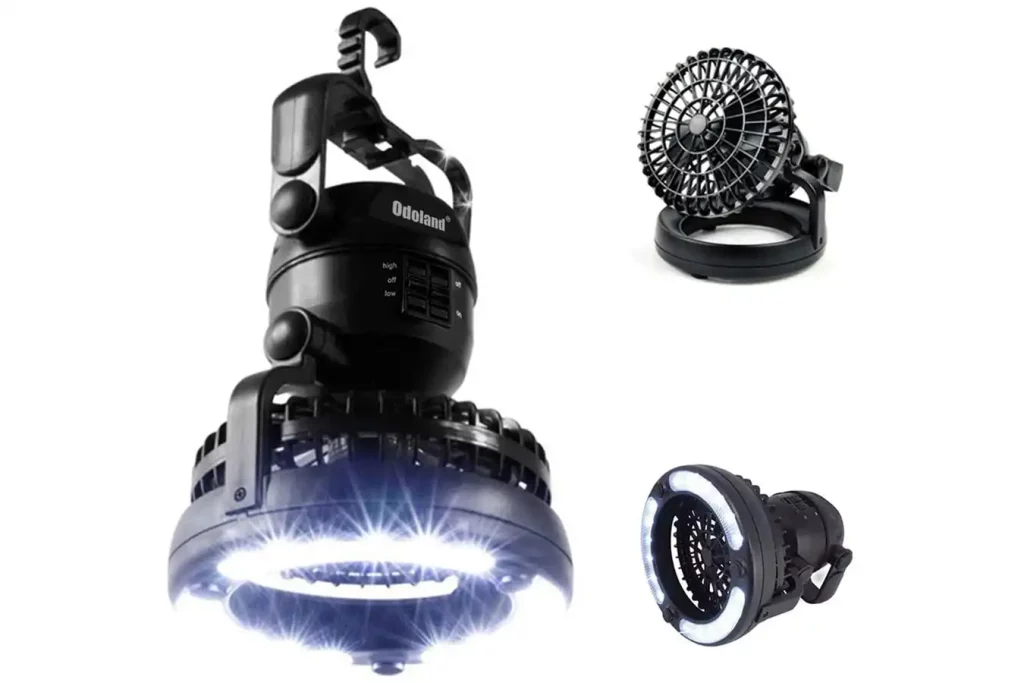
But whatever your preference, remember to pack extra batteries. After all, ghost stories are less spooky when you can see everyone’s face.
Repair kits and maintenance tools
Alright, storytime. My friend once went on a solo camping trip and ended up with a massive tear in her tent, thanks to a super friendly (read: super nosy) deer. Guess what saved her? A simple repair kit. From patching up tents and sleeping bags to fixing a broken backpack strap, these kits are literal game-changers. And don’t get me started on maintenance tools – having a small sewing kit or some duct tape can make the difference between “best trip ever” and “why did I even leave my house?”
Camping Axe
And finally, the robust camping axe—a tool as old as time (or at least as old as camping). It’s essential for chopping firewood or clearing a spot for your tent. My camping axe and I have been through a lot together, and let me tell you, it’s not just a tool; it’s a story-maker.
With my solo camping checklist, the wilderness won’t catch you off-guard. Remember, camping is like one of those cooking shows where chefs have to improvise. The better your tools, the better the outcome. So, while you might not need all these items every trip, having them in your arsenal means you’re ready for any challenge the great outdoors tosses your way! 🏕🔦🛠
Learn more: What to Bring Camping in a Cabin
Seasonal and Terrain-specific Adjustments
Nothing feels better than ticking off items on your solo camping checklist. Ah, the ever-changing moods of Mother Nature! Depending on where and when you’re setting off, your gear might need a little tweaking. It’s like dressing for a date; you want to impress but also be comfortable, right? So, whether you’re braving snow, enduring the heat, or navigating the coast, let’s get you prepped with the right gear for the occasion.
Winter camping must-haves
Oh, winter. Crisp air, silent nights, and a blanket of pristine snow. Magical, right? But also… cold. Really cold. Make sure you’re not left shivering with:
- A 4-season tent: Think of it as your cold-weather fortress. Designed to withstand snow loads and resist chilling winds.
- Insulated sleeping pads: Because the cold ground can be a sneaky heat thief.
- Down-filled sleeping bags: Rated for sub-zero temperatures. Snug as a bug, my friend.
- Snow stakes and snow shoes: Trust me, regular ones just won’t cut it when everything’s frozen.
Desert climates: Heat and hydration management
Ever feel like a roasted marshmallow? That’s the desert for ya! Scorching by day, chilly by night. Here’s how to tackle it:
- Breathable clothing: Lightweight, long-sleeved, and preferably in light colors. You want to reflect the sun, not soak it up.
- Water storage solutions: Think hydration bladders and collapsible water containers. Also, pro-tip? Drink regularly, even if you’re not feeling thirsty.
- Wide-brimmed hats and sunglasses: Your own personal shade-makers.
Coastal and wetland trips: Waterproofing and tide considerations
Ah, the call of the ocean! Waves crashing, seagulls squawking. But also… salt, sand, and sneaky tides. Be ready with:
- Tide charts and coastal maps: Because nobody likes unexpectedly wet feet.
- Waterproof bags and containers: For your electronics, food, and anything else you’d rather not get soggy.
- Quick-drying clothing: Because wet jeans are nobody’s friend.
- Sand stakes for tents: Regular stakes? They’re just going to wiggle out in soft sand.
Whether you’re trekking through snow, sand, or swamp, each environment has its own quirks. But with the right gear, you’ll be more than ready to embrace the beauty (and challenges) of every landscape. 🌍🌨🌵🌊
Entertainment: Keeping Morale High
Who said solo camping is all about surviving the wild? Sure, it’s about the thrill and challenge, but it’s also a fantastic opportunity to indulge in some good ol’ fashioned entertainment! Imagine a calm evening, the soft rustle of leaves, and a harmonica playing in the background. Sounds delightful, doesn’t it? Here’s how to keep that pep in your step and ensure your camping experience isn’t just about ticking boxes.
Books and journals: Documenting the journey
Remember when you were a kid, and you’d jot down your deepest secrets in that tiny diary? Camping solo is a bit like that: raw, real, and introspective. A journal is an excellent companion:
- Reflection: Capture your thoughts, the day’s events, or that quirky squirrel you befriended.
- Educational books: Maybe something on local flora and fauna? It can double as both entertainment and a learning experience.
- Fiction or Non-fiction: Getting lost in a gripping novel with nature as your backdrop? Pure bliss.
Photography: Capturing the beauty
There’s something utterly magical about the golden hour in the wild. And who wouldn’t want to capture that?
- Smartphones or DSLRs: These days, even a decent smartphone can take mesmerizing shots. If you’re more into the art, a DSLR can be your best buddy.
- Portable tripods: Want to get in the frame? A tripod can be a game-changer, especially for those breathtaking wide-angle shots or time-lapses.
- Nature’s wonders: From the tiny dewdrops to majestic mountain ranges, there’s always something picture-perfect. Remember to respect nature, and tread lightly.
Camp activities: Stargazing, whittling, and more
Ever tried identifying constellations or carving a tiny sculpture from a piece of wood? No? Well, solo camping is your chance!
- Stargazing: Just you, the vast universe, and perhaps a handy stargazing app or guidebook. It’s humbling and awe-inspiring.
- Whittling: You don’t need to be an artist. Just a piece of wood, a carving knife, and a bit of patience. By the end of the trip, you might just have a cute little memento!
- Musical instruments: A harmonica, ukulele, or even a flute can be wonderful campfire companions.
📖📸🌌🎶
Pack-up and Return: Ending Your Trip
Ah, the bittersweet end of a solo camping journey! It’s always a mixed bag of emotions – you’re thrilled by the experiences gained, but there’s also that tug of sadness as you pack up and leave the raw beauty of nature. But hey, every end signifies a new beginning, right? So, let’s make sure you wrap up your trip in the most responsible and fulfilling way possible. Here’s how:
Breaking down the camp: Efficient packing
Efficiently packing up your campsite is an art and a science combined. It’s a dance you get better at with every trip.
- Segmenting: Start by categorizing your gear – cooking equipment, sleeping arrangements, clothing. This way, you know exactly where everything goes.
- Rolling vs. Folding: For sleeping bags and tents, rolling can be more space-efficient than folding. Plus, it prevents creases!
- Air out: Ensure everything’s dry before packing. The last thing you want is mold growing on your gear for the next trip.
Trash management: Leave no trace behind
Remember, the woods were your home, even if it was temporary. Treat it with respect.
- Pack in, pack out: Every wrapper, bottle cap, or piece of litter you brought? It needs to leave with you.
- Organic waste: Sure, it’s biodegradable. But it’s best to minimize your impact. Consider compostable bags or burying organic waste in a hole far from water sources.
- Recycle: Once you’re back in civilization, ensure you recycle whatever you can. Nature will thank you!
Reflecting on the experience: Emotional and mental gains
The physical journey might be over, but the emotional one? That’s just beginning.
- Journaling: You’ve documented your journey. Now, revisit those entries. Relive those moments. You’ll be amazed at the insights you gain.
- Sharing: Whether it’s a blog post, a chat with friends, or photos on social media, sharing your experiences can be therapeutic. Plus, you might inspire someone else to embark on their solo journey!
- Planning the next: They say the best way to get over a trip is to plan the next one. Even if it’s just a rough idea, let the wanderlust continue!
FAQs on Solo Camping Checklist
What should I bring solo camping?
Is it OK to go camping alone?
How can I make camping fun by myself?
What is self defense for solo camping?
Is solo camping safe for beginners?
How can I ensure I’m safe when camping alone?
What’s the best way to store food away from animals?
How much water should I carry for a solo trip?
Can I rely solely on electronic devices for navigation?
How do I choose between gear options when weight is a primary concern?
What’s the best way to let someone know where I am without consistent cell service?
How do I handle encounters with large wildlife like bears or moose?
Can I forage for food while solo camping, and how do I know what’s safe?
Grabbed your solo camping checklist yet? All good things come to an end. But the memories? They linger. As you head back to the daily grind, know that you’re richer in experiences, stories, and wisdom. Till the next adventure, camper! 🌲🎒🚶♂️📝
Summary
Well, folks, that was one epic journey, wasn’t it? With my solo camping checklist, the wilderness won’t catch you off-guard. From those initial sparks of planning to the sighs of returning home, every step (and misstep) of solo camping is a lesson and an adventure. You’ve now got a backpack full of advice and a compass pointing you in the right direction.
Solo camping isn’t just about the outdoors. It’s a journey inward. It’s about discovering unknown strengths, embracing vulnerabilities, and savoring solitude. It’s about feeling the world in its rawest form, and in the process, understanding a bit more about yourself.
Adventure, my friend, is addictive. Now that you’ve dipped your toes into the vast lake of solo camping, perhaps it’s time to dive into deeper waters. Mountain hikes? Desert treks? Coastal jaunts? The world is your oyster. Or, perhaps, your campsite.
Share your solo camping stories, mishaps, and triumphs! Whether it’s that time you perfected a campfire meal or that night the stars left you spellbound, we want to hear it. Drop a comment, post a pic, and become a beacon for future campers. After all, the trail is best traveled when knowledge is passed along.
Happy camping and till the next adventure beckons! 🌌🏕🌄🔥

